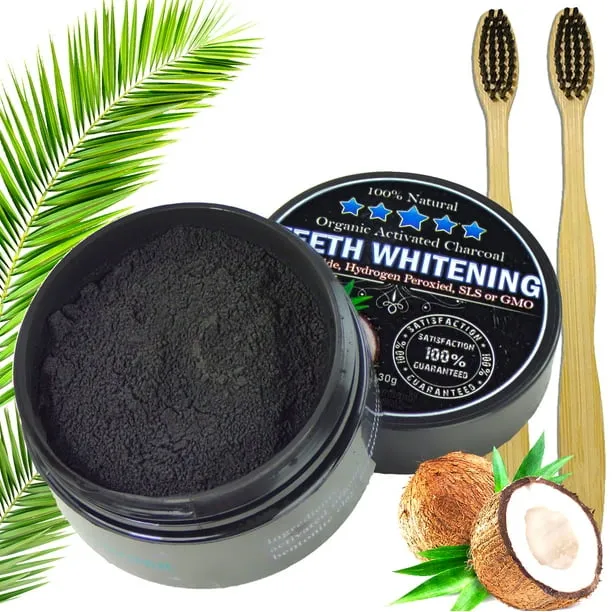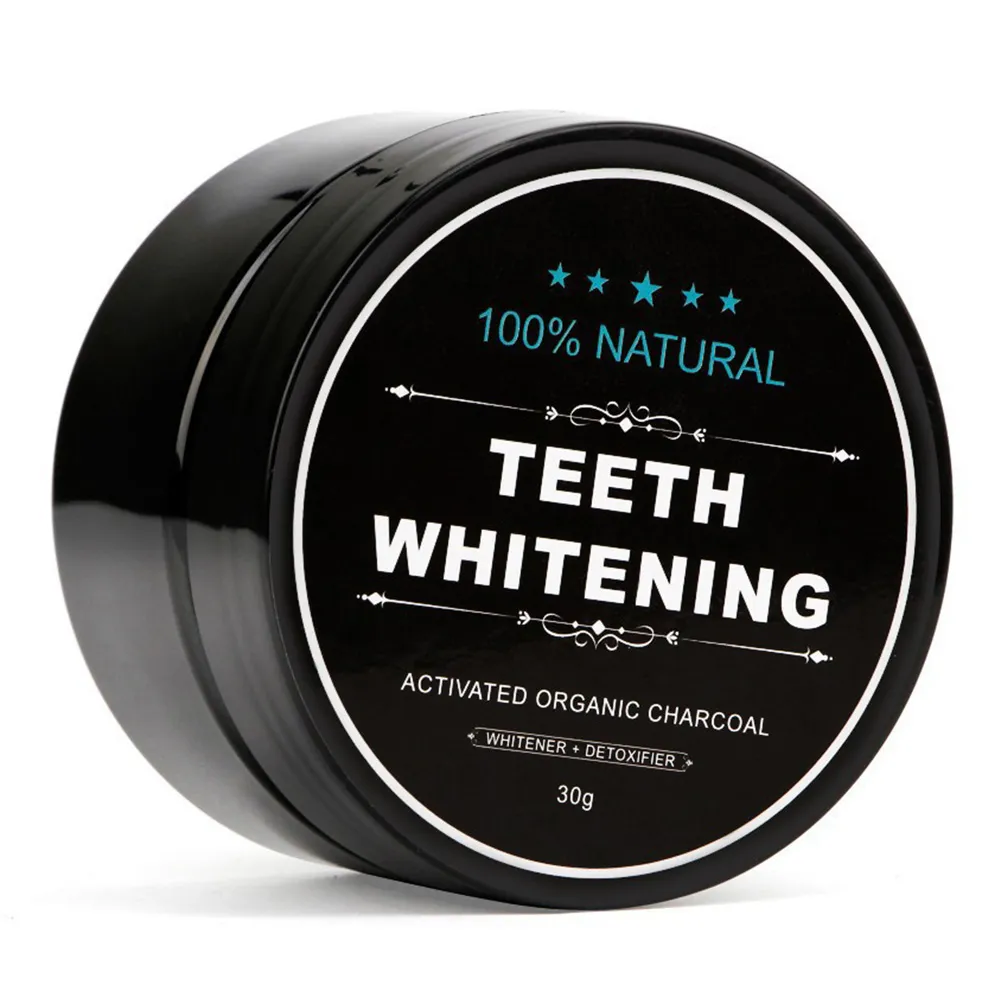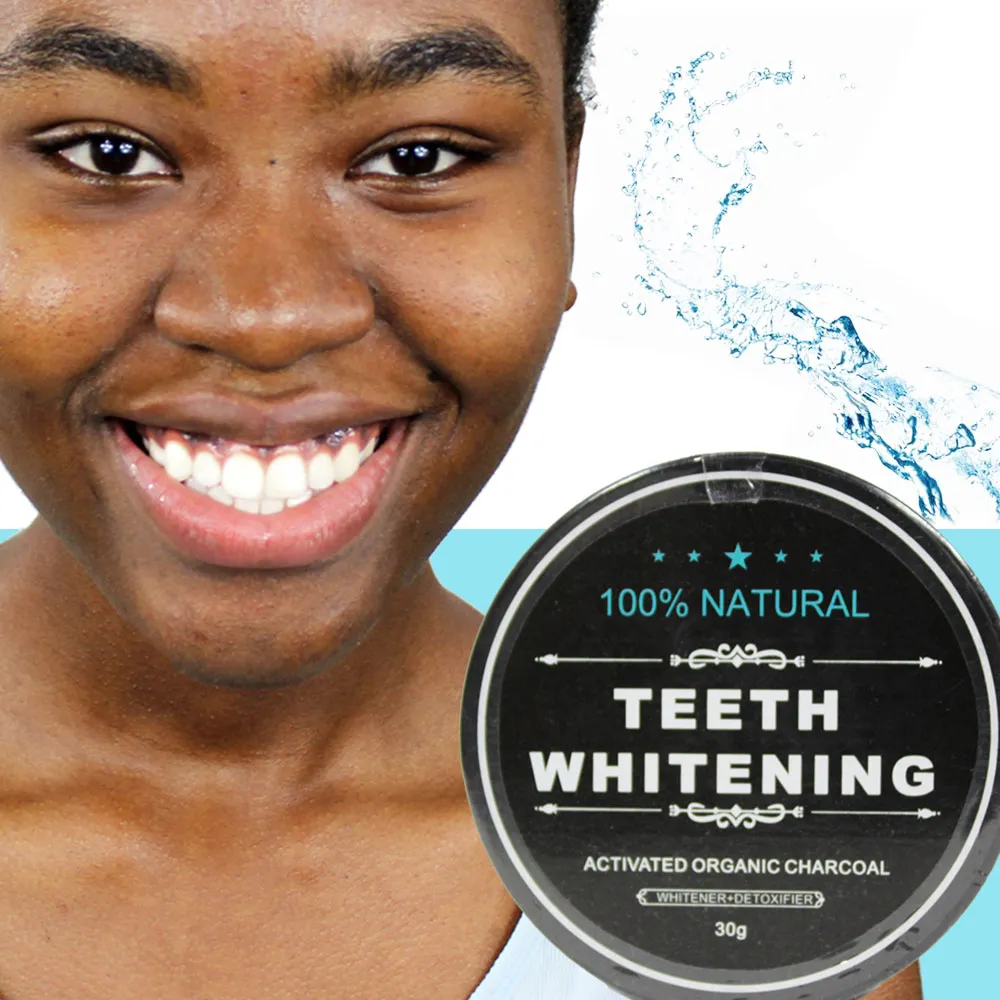What is Activated Charcoal?
Activated charcoal has gained significant popularity in the health and wellness world, with one of its most talked-about applications being teeth whitening. But what exactly is activated charcoal? It’s a form of carbon that has been processed to increase its porosity. This process, called activation, creates numerous small pores that trap chemicals. Unlike the charcoal you use for grilling, activated charcoal is made from various sources, including coconut shells, wood, and bamboo. The key to its effectiveness lies in this high porosity, which allows it to adsorb, or bind to, substances. In the context of teeth whitening, activated charcoal is believed to attract and remove stains and impurities from the surface of the teeth.
How Activated Charcoal Works for Teeth Whitening
The mechanism by which activated charcoal is thought to whiten teeth is primarily through adsorption. It’s important to understand that activated charcoal doesn’t chemically alter the tooth structure. Instead, its porous surface binds to stain molecules and other debris on the teeth, effectively removing them. This action can help eliminate surface stains caused by coffee, tea, wine, and other foods and drinks. As the stains are removed, the teeth appear brighter. However, it’s important to note that activated charcoal is not effective for intrinsic stains, which are those that originate from within the tooth itself, like the ones caused by aging or certain medications.
The Benefits of Using Charcoal for Teeth Whitening

The primary benefit associated with activated charcoal for teeth whitening is its ability to remove surface stains, leading to a brighter smile. Many users report noticeable improvements in the color of their teeth after consistent use. Another advantage is that it’s a natural alternative to some chemical-based whitening products. Unlike some commercial whitening treatments, activated charcoal is generally considered to be gentle on the teeth and gums. It is relatively inexpensive compared to professional whitening treatments or specialized toothpastes. It’s readily available and can be incorporated into your oral hygiene routine easily. Furthermore, it can also help freshen breath due to its ability to absorb bacteria and odors.
How to Use Charcoal for Teeth Whitening
Using activated charcoal for teeth whitening is straightforward, but proper technique is crucial to achieve the best results and avoid any potential harm. Begin by selecting a high-quality activated charcoal product. It is available in various forms, including powder, toothpaste, and capsules. The next steps involve preparing your charcoal paste, brushing technique, and the frequency of use.
Preparing Your Charcoal Paste
If using activated charcoal powder, you’ll need to create a paste. This can be done by mixing a small amount of the powder with water until it forms a thick paste. You can also add a small amount of your regular toothpaste to the mixture. This is entirely optional, but some people prefer the taste and texture it provides. Make sure the paste is not too watery. Aim for a consistency similar to that of standard toothpaste. When choosing charcoal toothpaste, you can skip this step.
Brushing Technique

Using a soft-bristled toothbrush, gently apply the charcoal paste to your teeth. Brush your teeth in small, circular motions, paying attention to all surfaces of your teeth. Avoid brushing too aggressively, as this can damage your enamel and gums. Brush for about two minutes. After brushing, rinse your mouth thoroughly with water. Be aware that charcoal can be messy, so be prepared for the black residue. Be extra careful when rinsing to prevent staining your sink.
Frequency of Use
The frequency of using activated charcoal for teeth whitening varies depending on your individual needs and preferences. It’s generally recommended to start with a few times a week and assess how your teeth respond. Excessive use could potentially lead to increased tooth sensitivity or enamel erosion. Some people use it daily for a short period, while others use it once or twice a week as part of their regular oral hygiene routine. It’s important to listen to your body and consult with a dentist if you have any concerns.
Things to Consider Before You Start
Before you start using activated charcoal for teeth whitening, there are a few things to keep in mind. The effectiveness of charcoal can vary depending on the type and severity of the stains on your teeth. It works best on surface stains and may not be effective on intrinsic stains. Always consult your dentist before incorporating any new oral hygiene products or treatments into your routine, especially if you have existing dental issues like sensitive teeth, cavities, or gum disease. It is also important to consider that activated charcoal is abrasive. Over time, it could potentially wear down the enamel, the protective outer layer of your teeth. It can also make your teeth more susceptible to cavities and sensitivity.
Potential Risks and Side Effects

While activated charcoal is generally considered safe, there are some potential risks and side effects to be aware of. One of the main concerns is the abrasiveness of charcoal. The gritty nature can wear away the enamel, leading to increased sensitivity and a higher risk of cavities. Some people may experience temporary tooth sensitivity after using activated charcoal. This is often due to the removal of surface stains or the abrasive action on the enamel. Although rare, excessive use could potentially irritate the gums, especially if you brush too aggressively. If you experience any of these side effects, discontinue use and consult your dentist.
Choosing the Right Charcoal Product
When selecting an activated charcoal product for teeth whitening, consider several factors. Look for products made from high-quality, food-grade activated charcoal derived from safe sources like coconut shells. Ensure that the product does not contain any harsh chemicals, additives, or artificial sweeteners. Read reviews and research the brand to assess its reputation and the experiences of other users. Choose the form that best suits your preferences and ease of use, whether it’s powder, toothpaste, or capsules. If you have sensitive teeth or any existing dental issues, choose a product specifically formulated for sensitive teeth.
Different Forms of Charcoal for Teeth Whitening
Activated charcoal is available in various forms, each with its own advantages and disadvantages. Activated charcoal powder is the most common form. It’s versatile, allowing you to adjust the concentration to your preference, but can be messy to use. Charcoal toothpaste combines charcoal with other ingredients found in regular toothpaste, making it easier to incorporate into your routine. It offers the convenience of a familiar product, but you have less control over the charcoal concentration. Capsules are another option, often used to create your own paste by opening the capsule and mixing the powder with water. They are convenient for travel and allow for precise dosing. The choice depends on your personal preference and what fits best into your routine.
Top Charcoal Products Reviews

When evaluating different charcoal products, consider these factors. Look at the quality of the activated charcoal, the presence of other ingredients, and the overall user reviews. Compare products based on their effectiveness in removing stains, whitening teeth, and improving oral hygiene. Assess factors such as taste, texture, and ease of use. Research different brands and products to understand their strengths and weaknesses. Before purchasing, read reviews from other users to get insights into their experiences.
The Best Charcoal Toothpaste
Choosing the best charcoal toothpaste involves assessing several key features. The ideal charcoal toothpaste should contain high-quality activated charcoal, ideally sourced from natural materials. Look for additional ingredients that support oral health, such as fluoride for enamel protection and natural sweeteners. Consider the flavor and texture of the toothpaste, ensuring it’s pleasant to use without being overly abrasive. Check the user reviews to evaluate the product’s effectiveness and any potential drawbacks. Ensure the toothpaste has been tested and approved by dental professionals or reputable organizations to guarantee its safety and efficacy.
Alternatives to Charcoal Teeth Whitening
If activated charcoal isn’t for you, several alternatives can help you achieve a brighter smile. Over-the-counter whitening products, such as whitening strips, gels, and toothpastes, are widely available and often contain hydrogen peroxide or other bleaching agents. Professional teeth whitening treatments offered by dentists are the most effective option. They use stronger bleaching agents and can provide significant results. Maintain a good oral hygiene routine, which includes regular brushing, flossing, and professional cleanings, to keep your teeth healthy and bright. Dietary changes, such as avoiding staining foods and drinks, can also help maintain a whiter smile.
In conclusion, activated charcoal can be a useful addition to your oral hygiene routine for teeth whitening. Understanding its properties, benefits, and potential risks is crucial before you start using it. Combining it with a good oral hygiene routine, including regular brushing, flossing, and dental checkups, can contribute to a brighter and healthier smile. Remember, consult with your dentist before using activated charcoal or any other teeth-whitening product to ensure it’s right for you.
